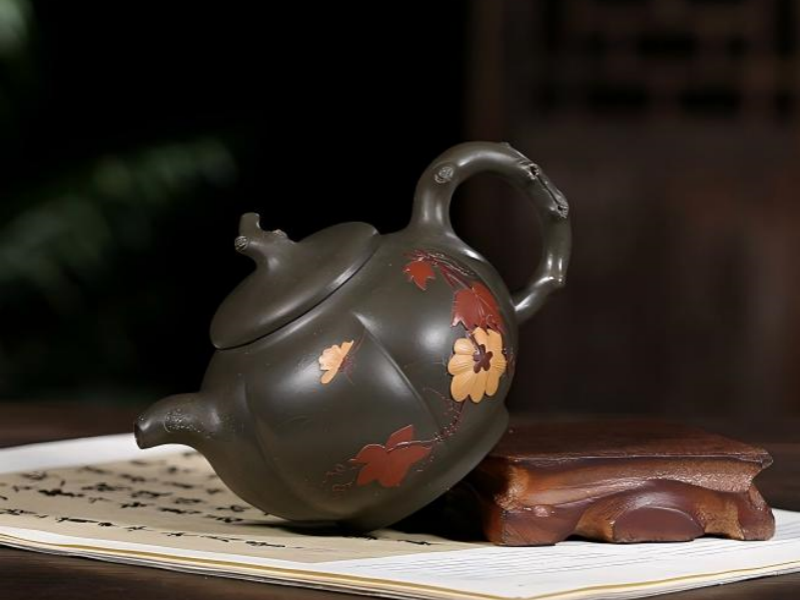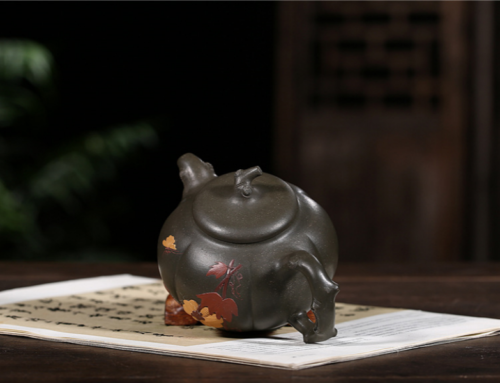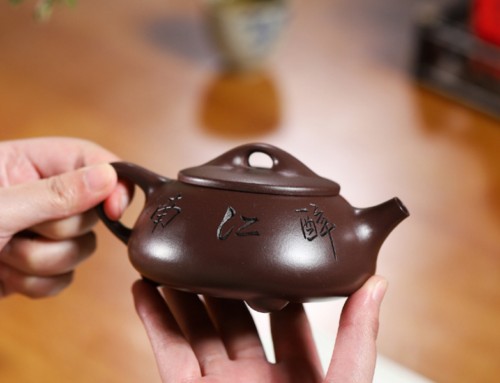The Best Teas for Yixing Teapots – The Comprehensive List
What’s so special about Yixing pots?
Yixing teapots have been popular with tea drinkers for hundreds of years and for good reason. Cultivated from the region’s unique purple clay (zisha), which derives its name from the only place it’s found – the Yixing region of Jiangsu – its known for its ability to enhance the flavor and aroma of the tea steeped inside it. Yixing pots date back to the Ming Dynasty, when scholars and tea masters discovered the unglazed clay was able to enhance both the taste and aroma of their favorite teas (above all, aged puerh and oolong). These days, Yixing pots are one of the most treasured tea accessories for tea acolyte and collector alike. What makes Yixing pots so special? It’s all in the clay. Yixing zisha is mineral-rich and highly porous, meaning it absorbs traces of the tea’s flavors and aromas. Over time, the pot develops a “memory” of the tea, imparting deeper and more complex flavors with each brew. For this reason, many tea drinkers assign one Yixing pot to one tea – so that the pot’s seasoned walls can further intensify the subtle notes and nuances of that tea.
To sum up Yixing pots are more than teapots. They are companions in a lifelong relationship with tea, growing in value over every session when the conjunction of tea, pot and drinker becomes more meaningful. If you’re genuinely determined to delve into the world of tea, Yixing is something you should definitely take an interest in. The distinguishing feature of Yixing teapots is the way that the Yixing clay interacts with tea. Yixing teapots are always unglazed, and, unlike glazed ceramics or even glass, Yi xing clay is very porous. As the pot is used over and over again with the same type of tea, the pot will absorb tiny amount of tea particles into its walls. This will allow the teapot to gradually take on the smell and taste of the tea. This will allow the pot to subtly alter (and, presumably, enhance) the flavor of each subsequent brew of tea. Yixing tea lovers claim that this heightened and intensified definition of the flavor and smell of the tea is a desirable effect. For this reason, these pots are never washed with soap, but only rinsed with water and allowed to air-dry. No cleaning product should ever touch the inside of the teapot, as a residue of the cleaning product will build up in the teapot and taint the flavor of the tea.
Best tea types for yixing pots

Different teas fits different ceramic properties and not all tea are appropriate. Rather, only certain teas are appropriate for the brewing properties of Yixing clay (in particular, the heat retention, the ability to hold up over repeated infusions, and flavor-enhancing properties).
Summary of best tea types
Overall, Yixing teapots are best-known for brewing oolong, Pu-erh, and black teas. These teas all have strong flavors and complex aromas that are well complemented and enhanced by the properties of Yixing pots. Additionally, the ability of Yixing pots to absorb flavor and aroma from each brewing and then re-release it into future brewings means that the more often you brew a single type of tea in one Yixing teapot, the better it will taste.
Oolong teas: the traditional choice
Oolong tea and Yixing pots are a classic combination. Oolong’s semi-oxidized leaves offer an array of flavor profiles—from floral and creamy to roasted and nutty. The porous Yixing clay absorbs these nuances and enhances the tea’s taste with each steeping.
Pu-erh Teas: Earthy and Aged
Pu-erh tea, particularly aged pu-erh tea, is another favorite for Yixing pots. Pu-erh is renowned for its earthy, sometimes woody or mushroom-y taste that softens and opens over multiple steeps. Yixing clay, especially the more absorbent duanni Yixing clay, is ideal for rounding out pu-erh’s sometimes sharp flavors. Sheng (raw) Pu-erh Young sheng can be astringent, but Yixing clay helps smooth its edges as the Yixing teapot becomes seasoned. Shou (ripe) Pu-erh Already smooth and earthy, shou pu-erh develops an even more complex smoothness and roundness in a well seasoned Yixing pot.

Case Study: A tea collector based in Guangzhou devoted one Yixing pot to a single shou PU-erh for over ten years. Eventually, “even just plain hot water steeped in it tasted earthy and subtly sweet,” demonstrating that the pot was exceedingly well seasoned.
Black Teas (Hong Cha): Rich and Robust
While oolong and Pu-erh are the traditional favorites for using in Yixing, certain black teas (in China known as hong cha) are also enhanced by Yixing’s unique form. The clay softens the tannic content of black tea leaves, smoothing out your drink while enhancing the tea’s natural sweetness.
What About Green, White, or Herbal Teas?

You may ask: is a Yixing pot suitable for green tea, white tea and herbal tea? You can certainly brew all type of teas in a Yixing pot, but most tea professionals would advice against it. The reasons include: Not ideal for green and white tea: Green and white teas are too delicate and light in aromas, which could be gravelly strong by clay’s flavor memory. Also they require far lower steeping temperature which Yixing pots are not designed for. Not ideal for herbal tea: Herbal teas are often strong in flavor which could remain in the seasoning of the pot permanently, and therefore, spoil any other teas brewing in it afterwards. When to use some other teapots: For green, white or herbal teas, we suggest a porcelain or, better yet, a glass pot, which have zero flavor memory, and hence suitable for any teas any time.
Choose and Care for Your Yixing Pot
Picking the right Yixing pot is just as important as picking your tea. The shape, size, and type of clay will all affect how you experience the brewing process and the finished liquor in your cup. The pot itself, if properly taken care of, can last a lifetime and develop in both beauty and value with every use.
Match the Pot Shape and Clay to the Type of Tea
Yixing teapots come in seemingly endless shapes and sizes. Usually, they are each created with a specific tea leaf or brew type in mind. Gifting the right tea an appropriate clay and shape of vessel can transform the tea-drinking experience from average to amazing.

How to Season and Clean Your Yixing Pot
A well-seasoned Yixing pot is a treasure. The process of seasoning not only cleanses the pot but also begins the journey of flavor absorption that makes Yixing so special.
Frequently Asked Questions About Tea Types Best Suited for Yixing Pots
Curiosity is part of the tea journey. Whether you’re new to Yixing or a seasoned collector, these are the questions that come up most often about tea types best suited for Yixing pots and how to get the most from your teaware.
Conclusion: Finding Your Perfect Tea and Yixing Pairing

The world of Yixing teapots is as deep and rewarding as the teas they brew. When you match the right tea with the right pot, you unlock a level of flavor, aroma, and tradition that’s impossible to achieve with ordinary teaware. The tea types best suited for Yixing pots—oolong, Pu-erh, and black teas—are not just recommendations; they’re the result of centuries of Chinese tea wisdom and modern experimentation. Oolong teas thrive in Yixing pots, revealing layer after layer of floral, creamy, or roasted notes with each infusion. The clay’s memory enhances complexity, making every session a new adventure. Pu-erh teas—both sheng and shou—benefit from the mellowing effect of Yixing clay. The pot rounds out earthy, sometimes sharp flavors, and over time, the seasoning brings out a deep, sweet richness. Black teas (Hong Cha) become smoother and more harmonious in Yixing, with softened tannins and a richer mouthfeel. The pot’s heat retention ensures a full-bodied, satisfying cup. While tempting to brew your Yixing with whatever tea you might have, you’ll get the best results with most lighter teas, including some oolong teas, in porcelain or glass. Subtle aromas and flavors that characterize many of these teas may be lost or jumbled by the memory of the clay. Reserve your Yixing for the teas that will really benefit from it. Every Yixing pot is unique, and so is every tea drinker. The best way to find what works for you is to try it. Start with a classic oolong or a beloved Pu-erh. Notice how the pot evolves, how the flavors enrich, how the ritual of brewing becomes more profound. If you love tea, start building a small collection of pots for your various types of tea. Over time, these pots will become beloved friends with stories and characters of their own.












